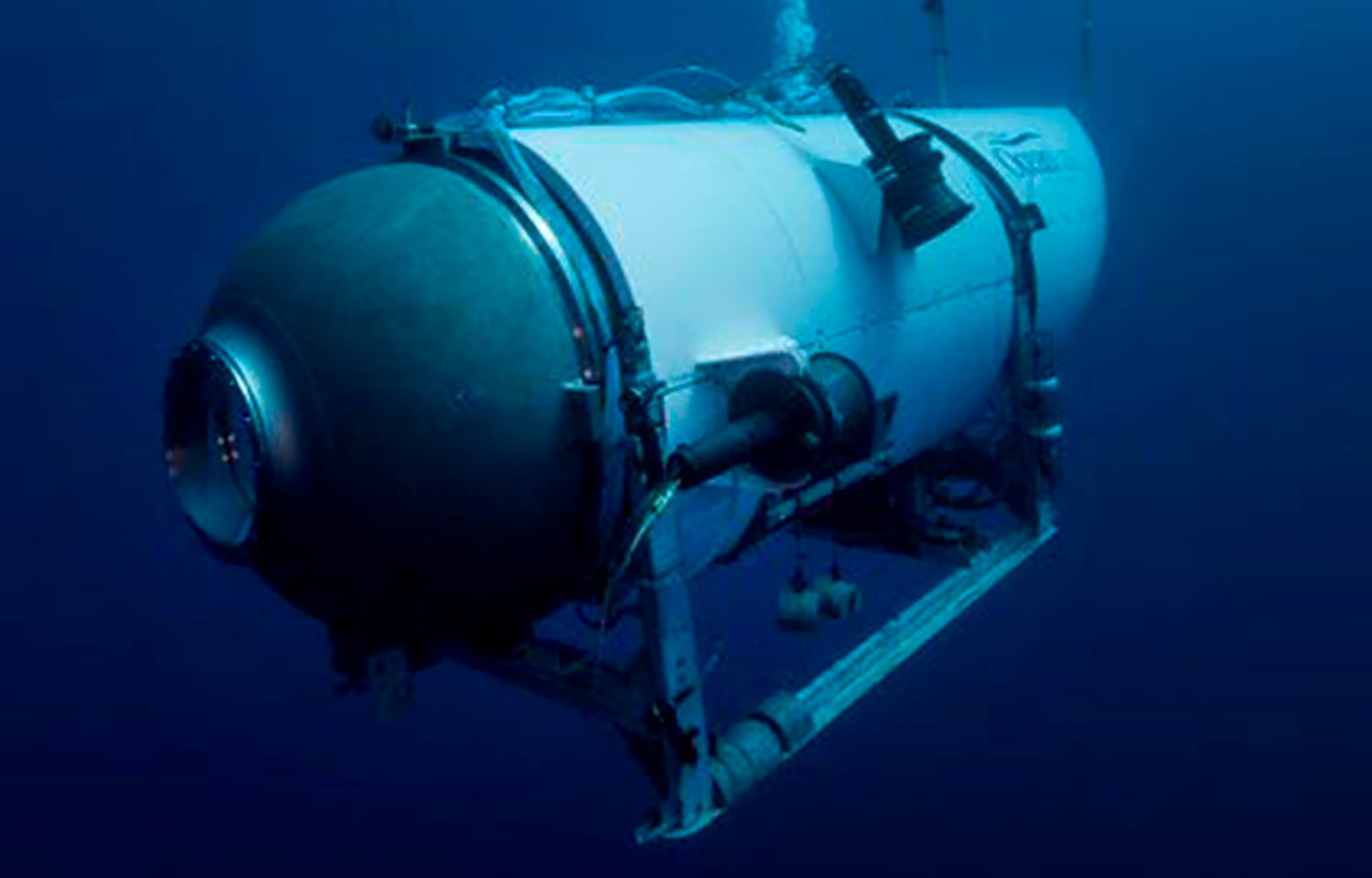US Navy: Hefty salvage system not required in probe of fatal Titan implosion
The U.S. Navy said Sunday it won’t be using a large piece of salvage equipment it had deployed to the effort to retrieve the Titan submersible

The U.S. Navy said Sunday that it won't be using a large piece of salvage equipment that it had deployed to the effort to retrieve the Titan submersible.
The Flyaway Deep Ocean Salvage System had the capability of lifting an intact Titan back to the surface. The U.S. Coast Guard announced on Thursday that debris from the submersible had been found roughly 1,600 feet (488 meters) from the Titanic in North Atlantic waters.
The Titan submersible imploded on its way to tour the Titanic wreckage, killing all five on board. Debris was located about 12,500 feet (3,810 meters) underwater.
The Navy would only use the ocean salvage system if there were pieces large enough to require the use of the specialized equipment.
“Efforts are focused on helping map the debris field in preparation for recovery efforts and to support investigative actions. Efforts to mobilize equipment such as the Flyaway Deep Ocean Salvage System have been discontinued,” a Navy official told The Associated Press.
The Navy describes the Flyaway Deep Ocean Salvage System as a “portable, ship lift system designed to provide reliable deep ocean lifting capacity of up to 60,000 pounds for the recovery of large, bulky, and heavy sunken objects such as aircraft or small vessels.”
The Titan weighed 20,000 pounds (9,071 kilograms).
The Navy is continuing to support the U.S. Coast Guard as operations continue.
On Saturday, the Transportation Safety Board of Canada said that it’s begun an investigation into the loss of the submersible and has been speaking with those who traveled on Titan’s mothership, the Polar Prince.
Authorities from the U.S. and Canada began the process of probing the cause of the underwater implosion and are grappling with questions of who is responsible for determining how the tragedy unfolded.
“We are conducting a safety investigation in Canada given that this was a Canadian-flagged vessel that departed a Canadian port and was involved in this occurrence, albeit in international waters,” said Kathy Fox, chair of the transportation board. “Other agencies may choose to conduct investigations.”
The Polar Prince left Newfoundland on June 16, towing the ill-fated Titan. There were 41 people on board — 17 crew members and 24 others — including the five-man team.
Fox said the TSB will share information they collect with other agencies, like the U.S. National Transportation Safety Board and the U.S. Coast Guard, within the limits of Canadian law. Voice recordings and witness statements are protected under Canadian law, she said.
“We don’t want to duplicate efforts. We want to collaborate," she said.
The Royal Canadian Mounted Police also announced Saturday that they are studying the circumstances that led to the Titan deaths to decide whether a full investigation is warranted. That full probe will only take place if it appears criminal, federal or provincial law may have been broken, officials said.
The Coast Guard led the initial search and rescue mission, a massive international effort that likely cost millions of dollars.
It was not entirely clear who would have the authority to lead what is sure to be a complex investigation involving several countries. OceanGate Expeditions, the company that owned and operated the Titan, is based in the U.S. but the submersible was registered in the Bahamas. OceanGate is based in Everett, Washington, but closed when the Titan was found. Meanwhile, the Titan’s mother ship, the Polar Prince, was from Canada, and those killed were from England, Pakistan, France, and the U.S.
The National Transportation Safety Board said Friday that the U.S. Coast Guard has declared the loss of the Titan submersible to be a “major marine casualty” and the Coast Guard will lead the investigation.
The Coast Guard has not confirmed that it will take the lead.
The deep-sea investigations promise to be long and painstaking. How the overall investigation will proceed is complicated by the fact that the world of deep-sea exploration is not well-regulated.
A key part of any investigation is likely to be the Titan itself. The Titan was not registered as a U.S. vessel or with international agencies that regulate safety. And it wasn’t classified by a maritime industry group that sets standards on matters such as hull construction.
OceanGate CEO Stockton Rush, who was piloting the Titan when it imploded, had complained that regulations can stifle progress.
One question that seems at least partially resolved is when the implosion likely happened. After the Titan was reported missing, the Navy went back and analyzed its acoustic data and found an “anomaly” Sunday that was consistent with an implosion or explosion in the general vicinity of where the vessel was operating when communications were lost, said a senior U.S. Navy official.
The Navy passed on the information to the Coast Guard, which continued its search because the data was not considered definitive, according to the official, who spoke on condition of anonymity to discuss a sensitive acoustic detection system.
The Titan launched at 8 a.m. that day and was reported overdue that afternoon about 435 miles (700 kilometers) south of St. John’s, Newfoundland. Rescuers rushed ships, planes and other equipment to the area.
Any sliver of hope that remained for finding the crew alive was wiped away early Thursday, when the Coast Guard announced that debris had been found near the Titanic.
Killed in the implosion were Rush, two members of a prominent Pakistani family, Shahzada Dawood and his son Suleman Dawood; British adventurer Hamish Harding; and Titanic expert Paul-Henri Nargeolet.
Questions about the submersible’s safety were raised by both by a former company employee and former passengers.
Subscribe to Independent Premium to bookmark this article
Want to bookmark your favourite articles and stories to read or reference later? Start your Independent Premium subscription today.
